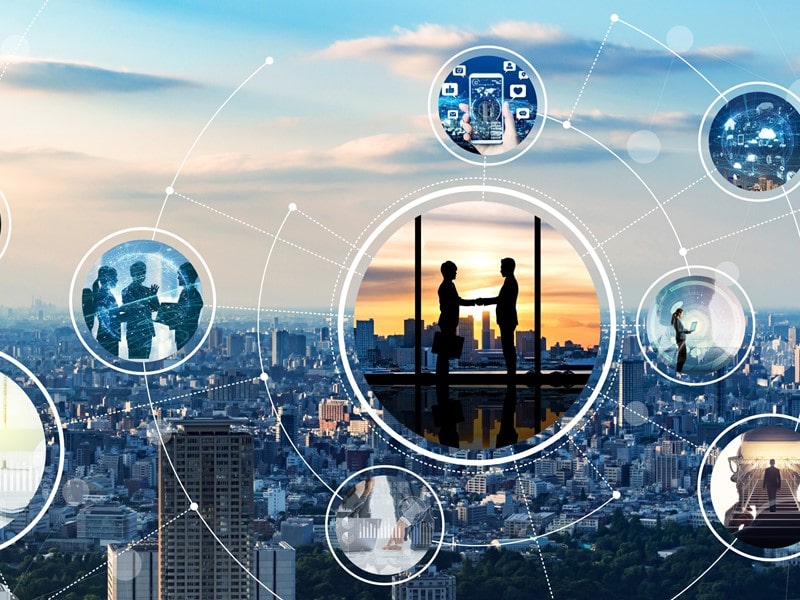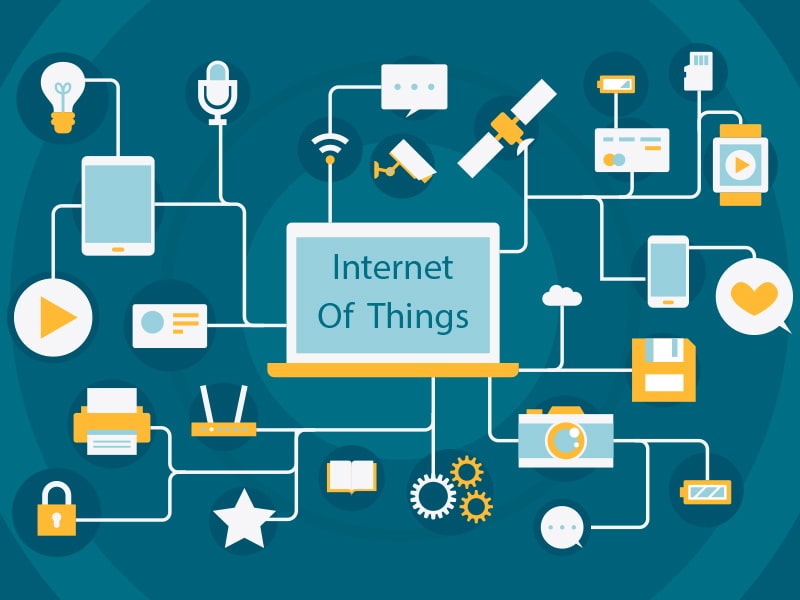
Internet of things in our lives
Internet of Things is one of the main technological trends of recent years. And many of us are already using the technology of the future without knowing it. So what’s under that definition?
Internet of Things (Internet of Things, IoT) is a concept of a single network connecting devices so that they can exchange data with each other and the environment, analyze this data and on the basis of it regulate certain processes. In short, these are technologies designed to automate the actions that we are used to managing ourselves in everyday life, and thus make human life even more convenient.
The ability of phones, tablets or televisions to go online has long been a natural phenomenon, but here we are talking about more ordinary items, whether it’s an iron, microwave or any other household appliances. Agree, imagine that the fridge itself orders food for you with delivery at home, is still quite difficult.
The essence of the Internet of things is that a person sets only a goal, but not a program to achieve it. The system should analyze the data and based on it perform the task. A man tells you what to do, not how.
Features
The future, which used to be just a fantasy movie story, can become a reality much faster than we think. The Internet of Things can significantly improve the quality of human life and affect virtually all areas of its activities. In the industry, the use of smart technologies will help track all stages of production, implement effective solutions and eliminate defects before a product is released from the assembly line.
Internet of things will make our everyday life much more comfortable: “intellectual” home appliances will watch the house, “smart” medical devices – to control the physical condition of the person. Such modern concepts as “smart city” are also largely based on the capabilities of the Internet of things.

Where it’s applied
The Internet of things penetrates into many areas of our lives and is already being successfully applied. The technology is most widely used in Smart Home systems: all appliances are integrated into a single network that controls the microclimate and, if necessary, controls the power supply, heating, security and fire protection systems, household appliances and multimedia devices.
In agriculture, IoT technology is used to control animals, plants and the environment. Farmers in Spain and Germany use sensors that monitor temperature and humidity and tell when it’s time to fertilise plants or harvest.
The concept of “smart city” is also the merit of modern intellectual technologies. A vivid example of that is Yandex. Traffic. This service collects data on traffic congestion, processes the information and can create a route for a detour.
In the construction of Internet things helps to track the status of homes and other structures, roads. Sensors in the road surface or on bridges analyze light, vibration levels, weather conditions and diagnose possible damage. This technology has already been tested in California and Michigan.
Constraints and risks
Of course, despite the sometimes impressive possibilities, the Internet of things is still in its infancy, because there are conditions that slow down its development.
Lack of uniform standards
The main problem is the lack of uniform standards. For the technology to function successfully, all devices on the network must interact with each other to form a single, interconnected ecosystem, and this requires a single language. So far, the Internet of Things is a fragmented system, each of which solves its own tasks. Large corporations, such as Microsoft or Google, are working on their ecosystems, and perhaps one of the platforms will form the basis for a single global network.
Security
The technology is still quite young, so analysts and experts are seriously afraid of cyberattacks and speculate on what will happen if the data falls into the hands of attackers. By hacking into the system, hackers will know absolutely everything about you and will have access to control any devices. Therefore, work on information protection mechanisms will be one of the priorities in the development of the Internet of Things.
Autonomous work
Another important task to be accomplished is the uninterrupted power supply to the devices connected to the network. To ensure that connections between devices are not disrupted, all devices must be self-contained, i.e. sensors must learn to draw power from the environment rather than from batteries, as is happening now.
Network Access
An additional hurdle is ensuring that all devices have access to the Internet. Not every device can be equipped with a Wi-Fi module, at least because of its size. However, the achievements of scientists in this field are encouraging – microchips with the size of only 1 mm2 and low power consumption have already been created. With it, virtually any device can connect to the network.
What awaits us in the near future
Our near future is home, able to independently control the microclimate, manage all systems and optimize the use of resources, unmanned cars, solving traffic jams, medical devices that will help doctors analyze the condition of patients. All spheres of our life are waiting for a qualitative leap in the coming decades.
While some scientists and researchers have expressed their concerns about the rapid development of technology, in particular the merger of IoT with artificial intelligence, the Internet of Things can bring about many positive changes in our lives. And it’s up to us how quickly these changes will happen.
